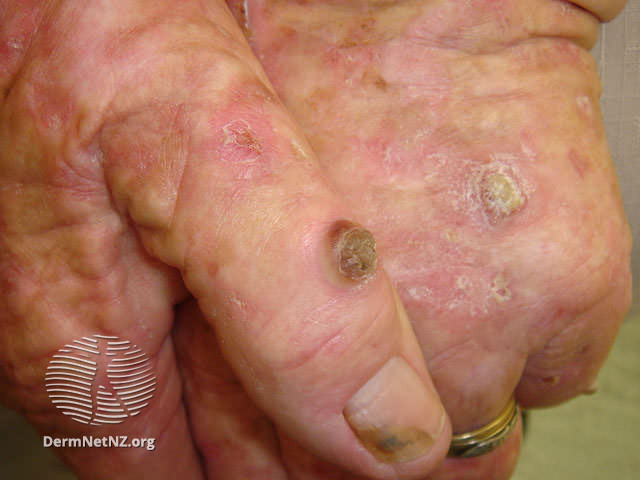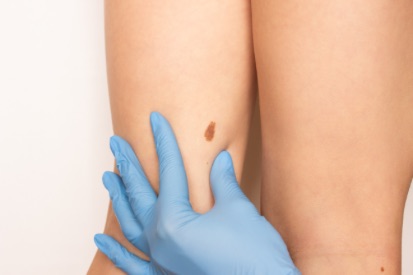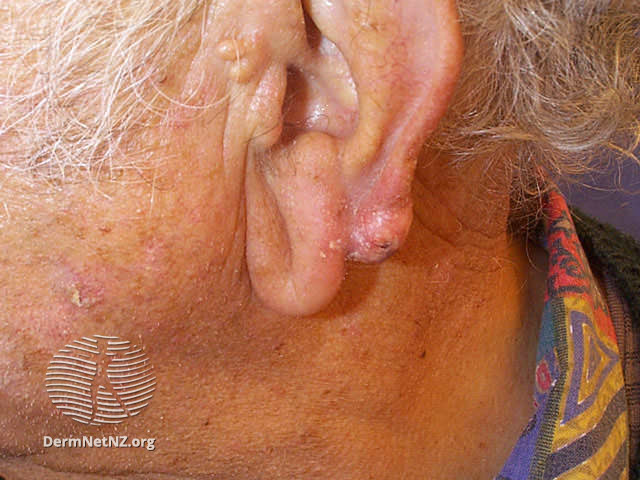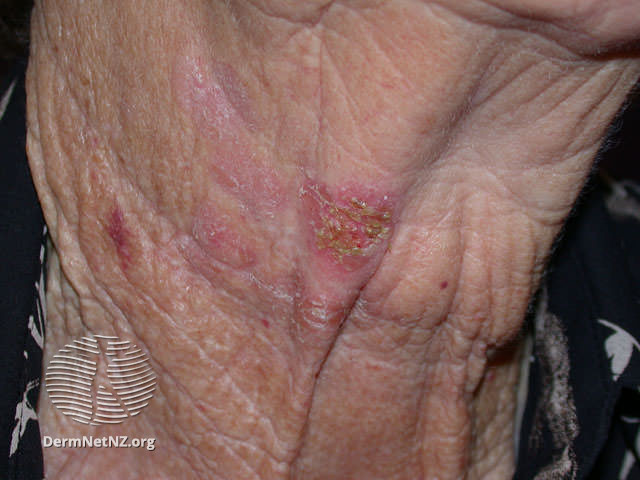Squamous Cell Carcinoma
What You Need to Know About Squamous Cell Carcinoma (SCC)
Squamous cell carcinoma (SCC) is the second most common type of skin cancer, developing in the squamous cells that make up the middle and outer layers of the skin. While squamous cell carcinoma is generally more aggressive than basal cell carcinoma (BCC), it is still highly treatable when detected early.Squamous cell carcinoma can appear as scaly, red patches, open sores, elevated growths with a central depression, or wart-like lesions. Prolonged exposure to ultraviolet (UV) radiation from the sun or tanning beds is the primary cause of SCC. Although this type of skin cancer can spread to other parts of the body if left untreated, it is rarely life-threatening when managed promptly.
Each year, over one million people are diagnosed with squamous cell carcinoma. Those at higher risk include individuals with fair skin, light-colored eyes, and a history of frequent sun exposure or tanning bed use. SCC is more commonly diagnosed in people over 50, though it can occur in younger individuals, especially those with significant UV exposure. Men are also at a higher risk of developing SCC compared to women.
What Are Effective Treatment Options for Squamous Cell Carcinoma?
Treating squamous cell carcinoma (SCC) effectively involves several approaches, depending on the cancer's size, location, and aggressiveness. Mohs surgery is a preferred treatment for SCC, especially when the cancer is located in sensitive areas such as the face, ears, or hands. This procedure involves meticulously removing the cancerous tissue layer by layer, ensuring all cancer cells are eradicated while preserving as much healthy tissue as possible.
Other treatment options include excisional surgery, where the tumor and a margin of surrounding tissue are removed, and cryotherapy, which freezes the cancer cells. In some cases, topical medications or radiation therapy may be recommended, particularly for patients who are not suitable candidates for surgery.
Early detection and treatment are crucial for preventing the spread of SCC and achieving the best possible outcomes.
Examples of Squamous Cell Carcinoma




Symptoms of Squamous Cell Carcinoma
- Squamous cell carcinoma usually begins as a dome-shaped bump or a red, scaly patch of skin.
- Rough and crusty and can bleed easily when scraped.
- Changes in existing growths: changes in the appearance of existing skin growths, such as warts or scars.
- Persistent sore: a sore or lump that doesn't heal, or a lesion that keeps recurring.
What Causes Squamous Cell Carcinoma?
- Squamous cell carcinoma (SCC) can affect individuals across diverse backgrounds.
- It is more prevalent in those with regular exposure to direct sunlight, especially in professions or lifestyles that involve significant sun exposure.
- While skin cancer is less common in individuals with darker complexions, they are at an increased risk for SCC in areas of the body not typically exposed to the sun.
Squamous Cell Carcinoma Prevention
FAQs: Squamous Cell Carcinoma (SCC)
Diagnosing Squamous Cell Carcinoma (SCC) involves performing a biopsy, in which a sample from the suspicious area is removed and examined under a microscope. This process confirms whether the lesion is cancerous and provides detailed information about its characteristics.
Treatment options for Squamous Cell Carcinoma (SCC) vary based on factors like the size, location, and stage of the cancer. Common approaches include surgical excision, electrodessication and curettage, cryotherapy, Mohs surgery for more complex cases, radiation therapy, and topical medications.
The frequency of screenings depends on individual risk factors. High-risk individuals, such as those with a history of SCC or other skin cancers, may need more frequent screenings. Consult with your dermatologist to determine the appropriate screening schedule for your situation.
Although Squamous Cell Carcinoma (SCC) typically grows more slowly than melanoma, it can still be locally aggressive and has the potential to spread to other parts of the body, particularly if left untreated. Early detection and prompt treatment are crucial for preventing complications and improving outcomes. Regular skin checks and awareness of any changes in your skin are essential for early intervention and minimizing the risk of progression.
A total body skin exam by a dermatologist is crucial for several reasons. Firstly, it serves as a proactive measure for the early detection of skin cancers, including melanoma, the deadliest form of skin cancer. Skin cancers are often highly treatable when identified at an early stage. A comprehensive examination allows the dermatologist to assess moles, birthmarks, and any unusual skin changes that may indicate potential issues.
Secondly, a dermatologist can identify and diagnose various skin conditions, including dermatitis, psoriasis, and infections. Early detection and treatment of these conditions can prevent them from escalating into more serious health issues.
Furthermore, a total body skin exam provides an opportunity to discuss and address any concerns or questions about skin health, sun protection, and skincare routines. Dermatologists can offer valuable guidance on skin cancer prevention, emphasizing the importance of sun protection measures, such as wearing sunscreen and protective clothing.
Regular skin exams become especially vital for individuals with risk factors, such as a family history of skin cancer, a personal history of sun exposure, or fair skin. Overall, a total body skin exam is a proactive and comprehensive approach to maintaining skin health, preventing skin cancers, and addressing any skin-related issues in a timely manner.
You should apply sunscreen daily, regardless of the weather. Even on cloudy days and in winter, UV rays can penetrate clouds and cause skin damage.
Sunscreen requires time to be absorbed into the skin, so it’s essential to apply it at least 15-30 minutes before heading outdoors. Be sure to reapply every two hours, especially after swimming or sweating, to maintain protection. Consistent use of sunscreen helps prevent sunburn, premature aging, and reduces the risk of skin cancer.
From Our QualDerm Family of Brands: Non-Melanoma Skin Cancers
Treatment Options for Squamous Cell Carcinoma
- Mohs micrographic surgery
- Excisional surgery
- Cryotherapy (freezing)
- Currettage and Electrodessication
- Chemotherapy
- Radiation
Featured Blogs

- General Dermatology
- Skin Care
- Chronic Skin Conditions
Skin tags are benign growths of excess skin which form in response to rubbing and irritation. Read more to learn about what we can do about them.
Read More
- General Dermatology
As the U.S. population ages, the number of Americans who suffer from skin diseases will continue to rise, according to the American Academy of Dermatology (AAD).
Read More
- Skin Cancer
- General Dermatology
- Sun Safety
A skin cancer story shared by a Dermatology Affiliates employee. Learn how easy it is for skin cancer to sneak into your life in many ways.
Read MoreFeatured Products for Sun Protection
Check your local office for current stock!
Check your local office for current stock!


